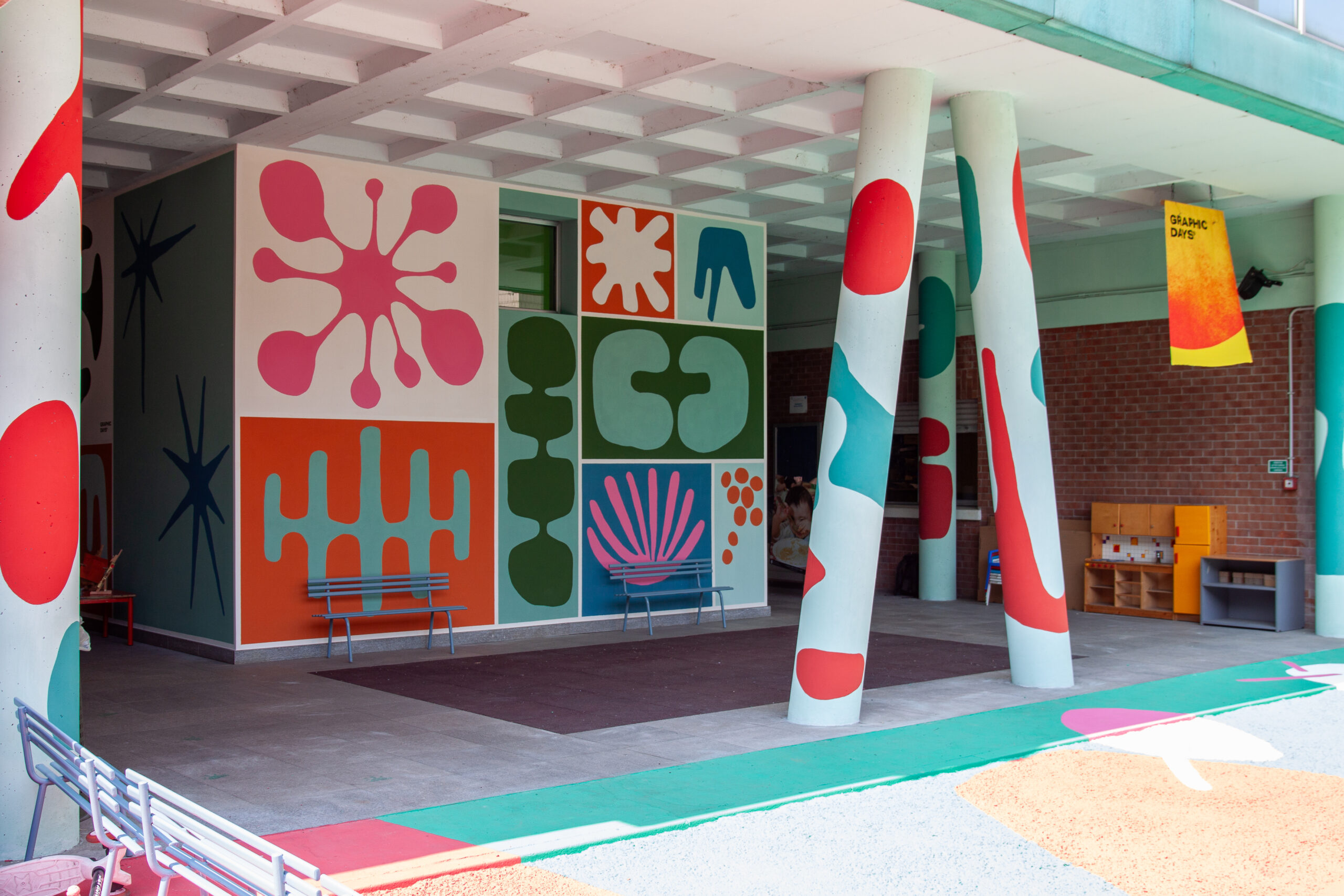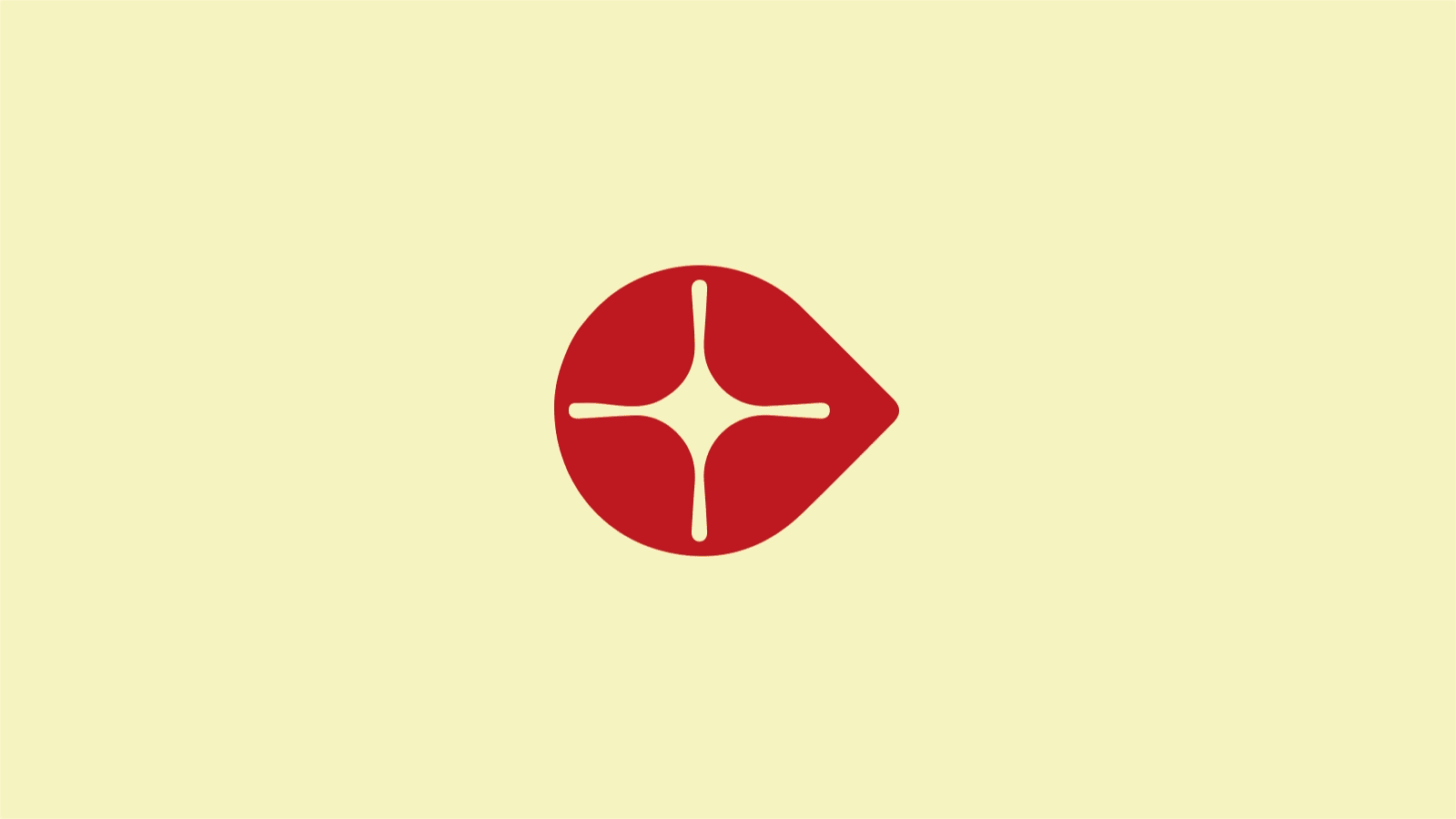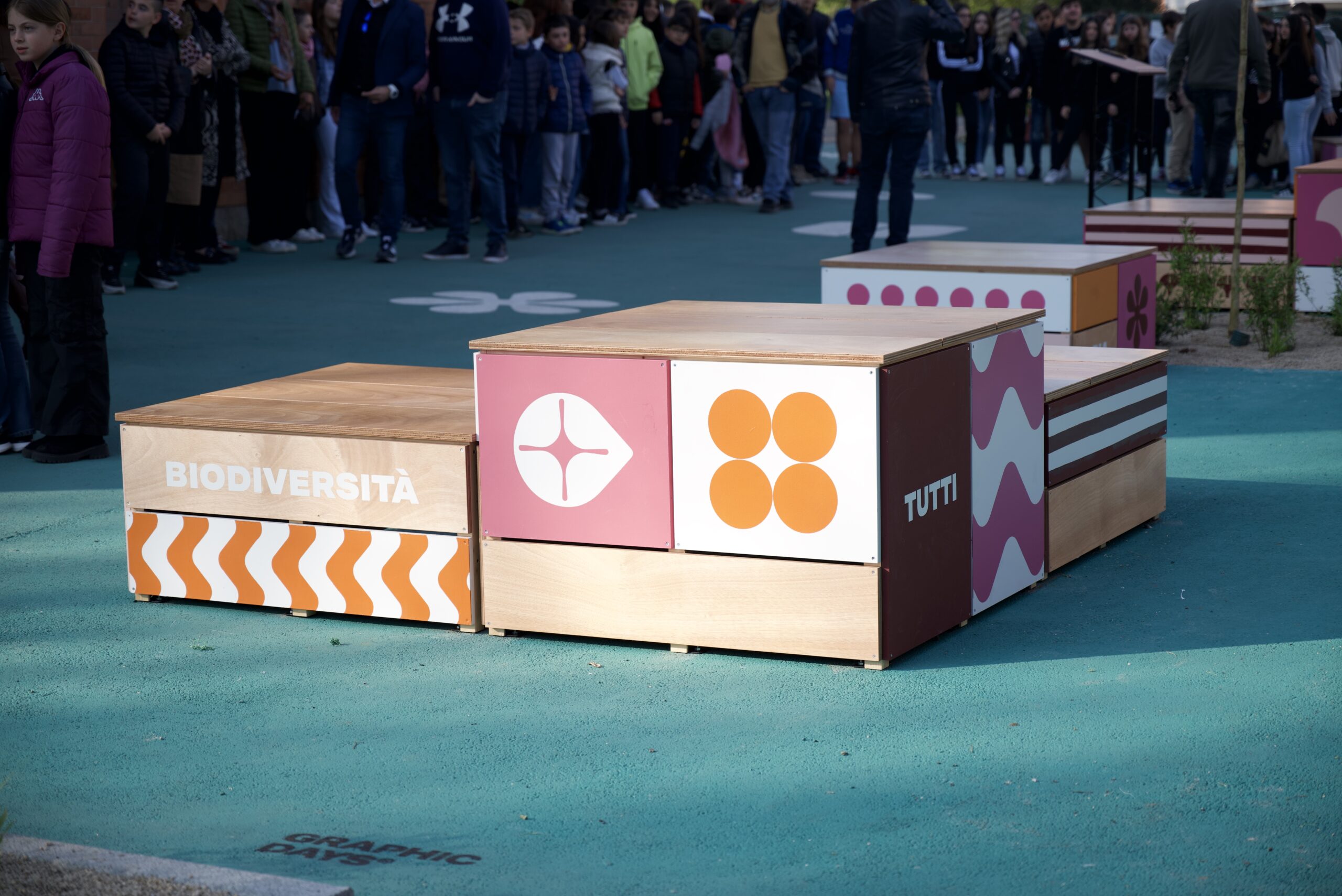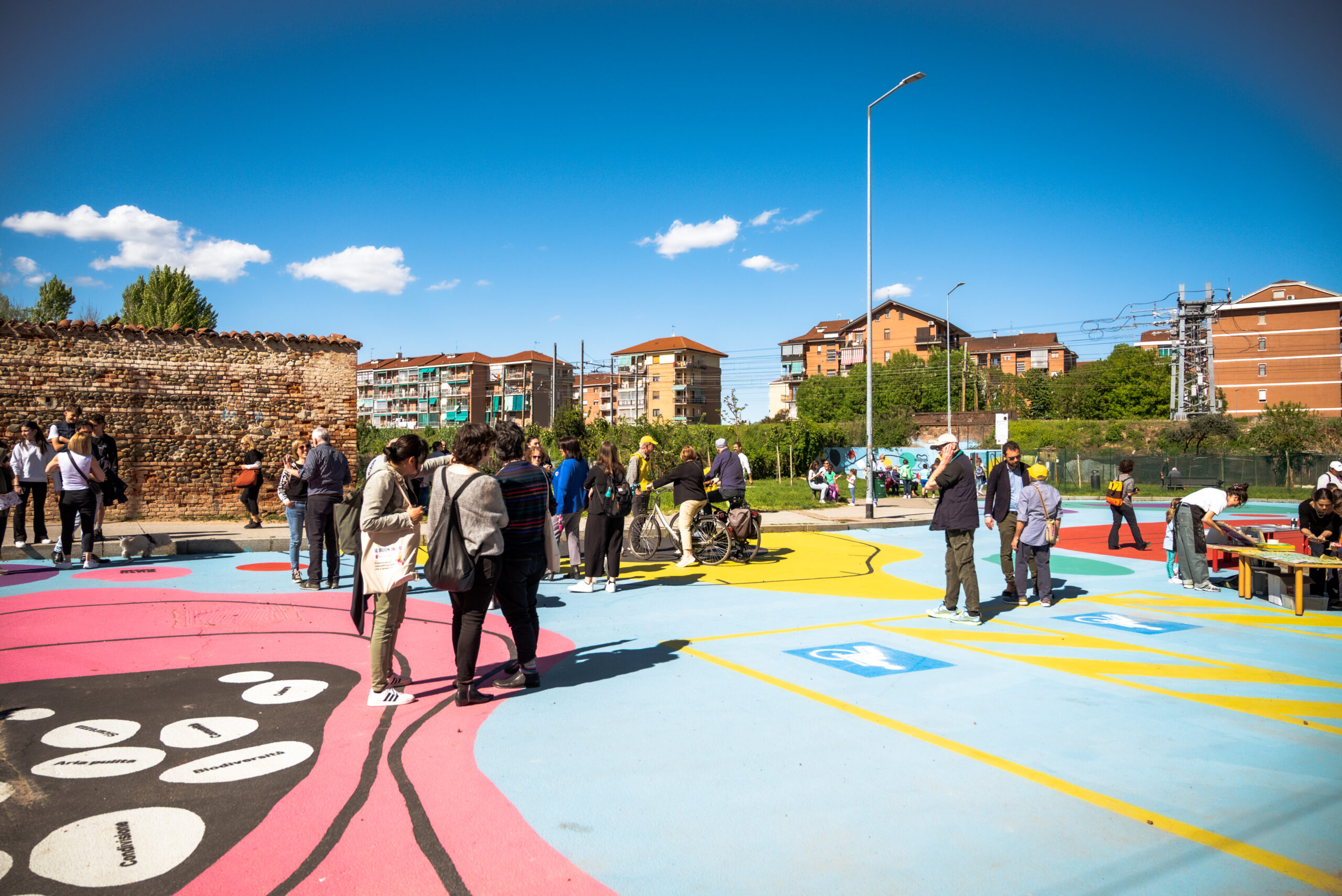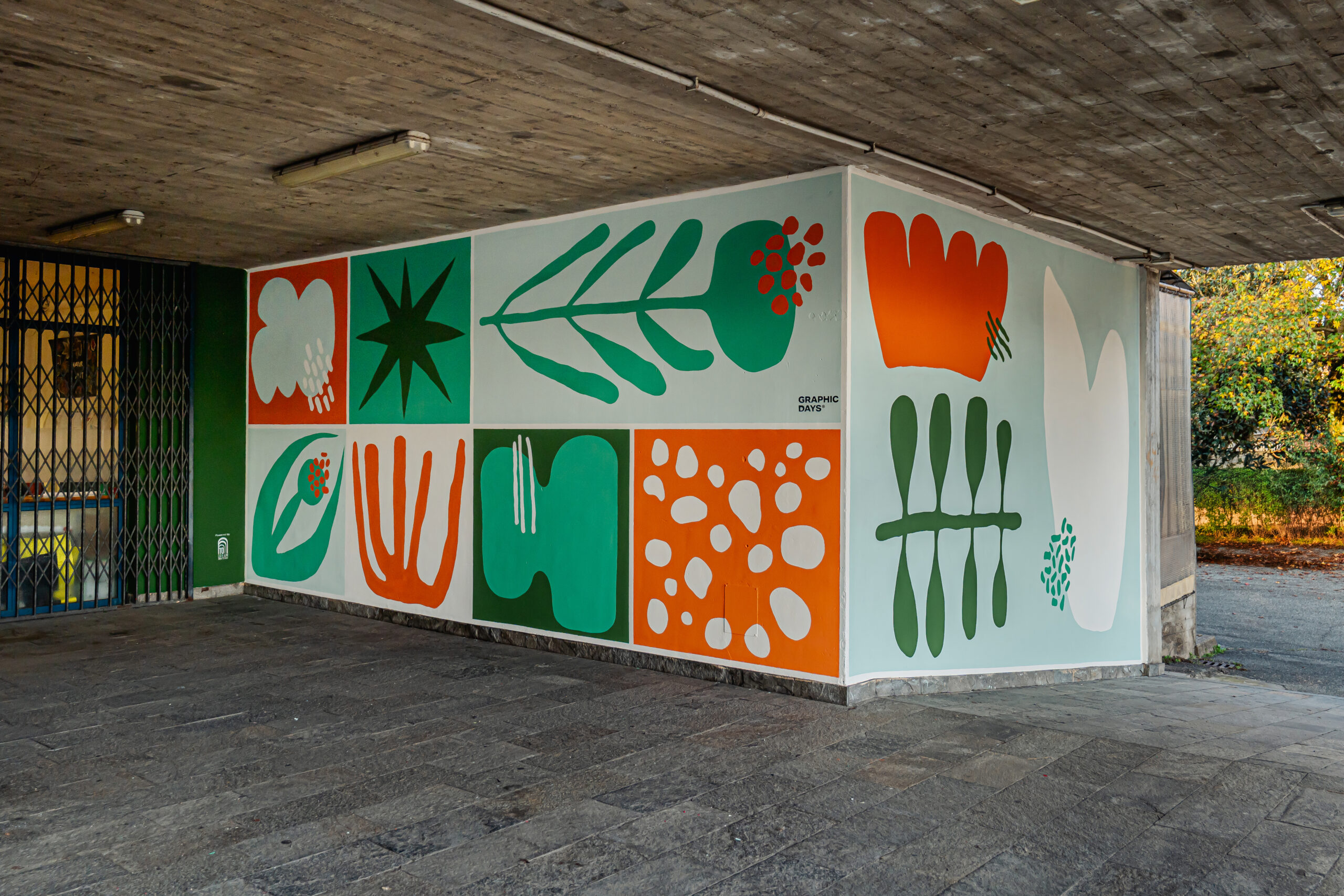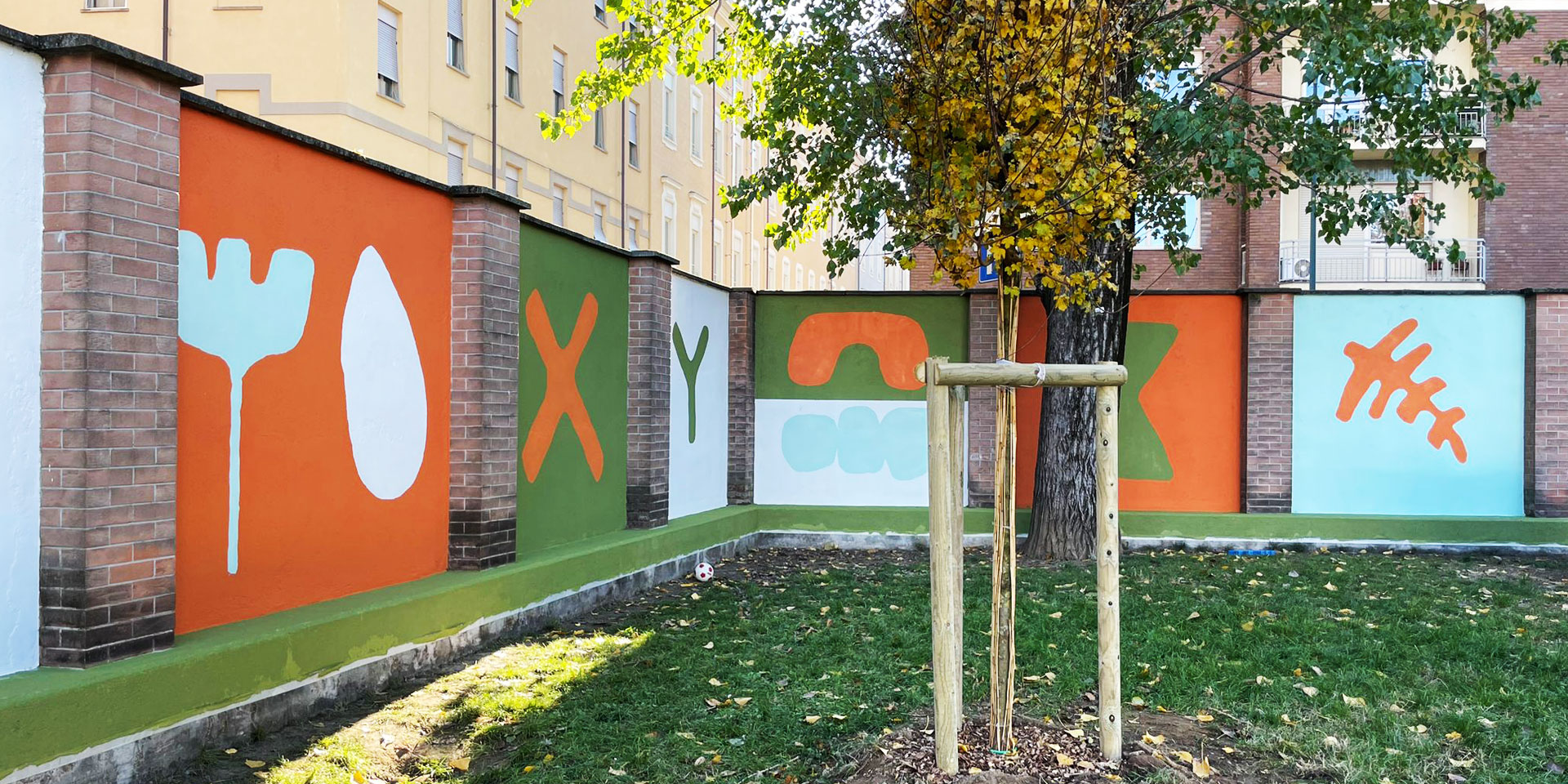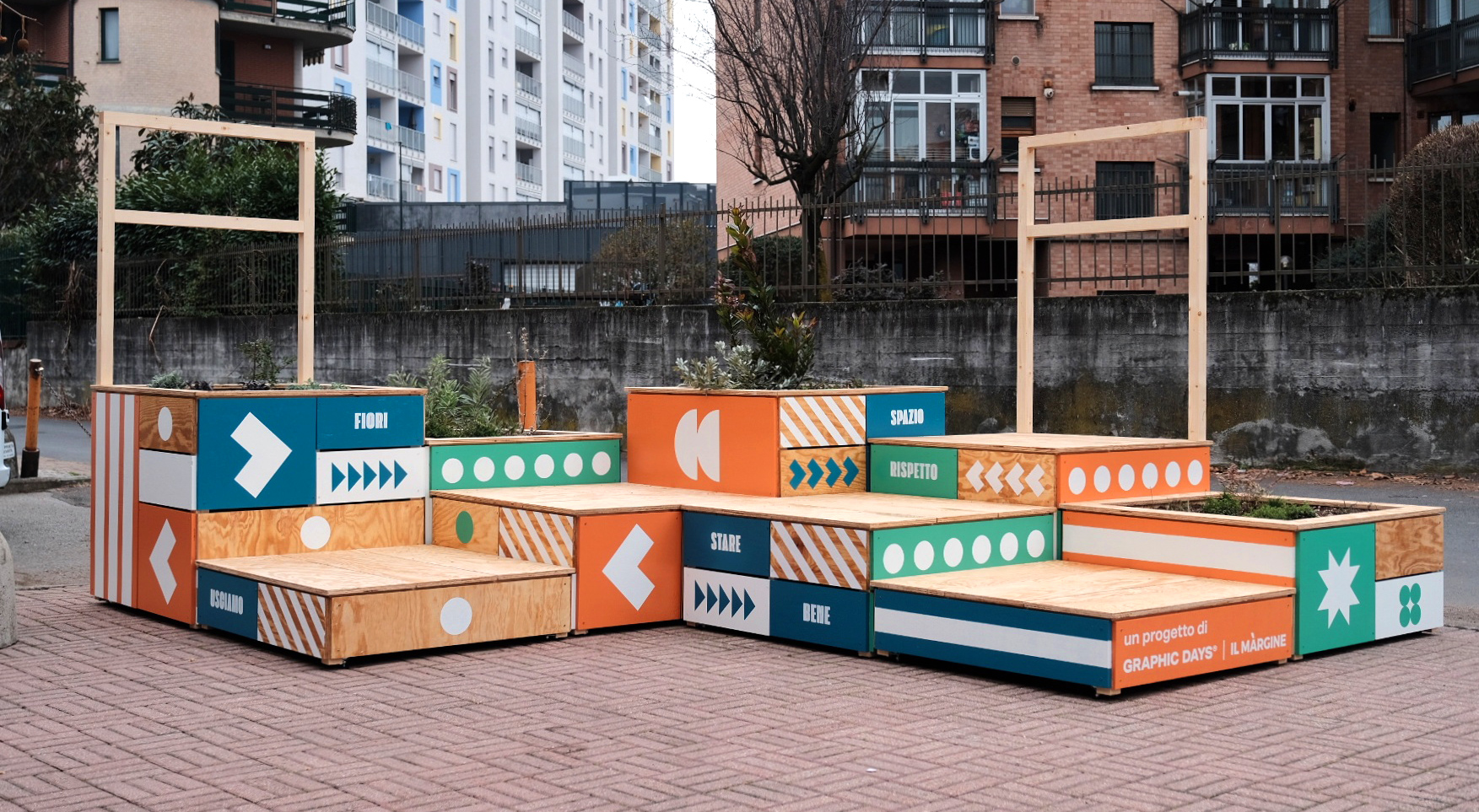We bring beauty to less visible places, foster dialogue between people and nature, and promote collective well-being through urban regeneration actions.
Mini Mega Spazio
Mini Mega Spazio is a Graphic Days® project born from the collaboration with Cooperativa Il Margine within the framework of the Wonder call supported by the Compagnia di San Paolo Foundation. The project in 2023 evolves to become the Graphic Days® container for urban regeneration activities by bringing initiatives to life in new contexts and with new actors.
It is “mini” because it is an oasis of caring for small-big things: of the gaze, of people, of everyday activities, of flora and small fauna.
It is “mega” because when creating new spaces together, there is no limit to imagination: it is a container of the possible, which transforms by embracing new developments, activities, people.
The Mini Mega Space goals
1.Encourage recreational and social activities in public space
2.Promote sustainable practices and awareness of public space care
3.Fostering sociability and a sense of belonging
The Design Thinking is at the core of the design method, beginning with the borrowing of systemic design concepts. Process steps:
Context analysis and co-design
Each intervention starts from stakeholder mapping and project construction in a dialogic and participatory way. In particular, through the workshop tool, stakeholders are involved and together critical issues and needs are identified and possible solutions are defined.
The intervention on the space
The actions are aimed at redesigning marginal spaces by making them places for being together and attractive, with new functions. The type of intervention can vary according to specific needs: from urban painting initiatives to designing new furniture, green areas and plantings.
Social activation
Once the intervention is completed, Graphic DaysⓇ engages with stakeholders in designing activities that will allow the space to remain alive, curating initiatives or creating connections between different actors.
Follow-up
Verification of project outcomes is carried out step by step at different stages of the process to identify the results achieved and any improvements to be made through discussion with stakeholders.
The principles behind the design method:
Modeling and replicability
Developing interventions that can be modeled and replicated enables innovative systemic approaches by creating a positive impact on society and building bridges between creative industries, the community, and the private and public sectors.
Circular and relational economy
Underlying the interventions is a systemic reflection on how different project components relate to each other, change over time, and fit into the context of larger systems, generating economies of relationships as well.
Creativity and technological innovation
Projects are based on an interdisciplinary and holistic approach, exploring in a disruptive and engaging way different languages and tools: from visual design to craft techniques to scientific approaches and technological implementation.

